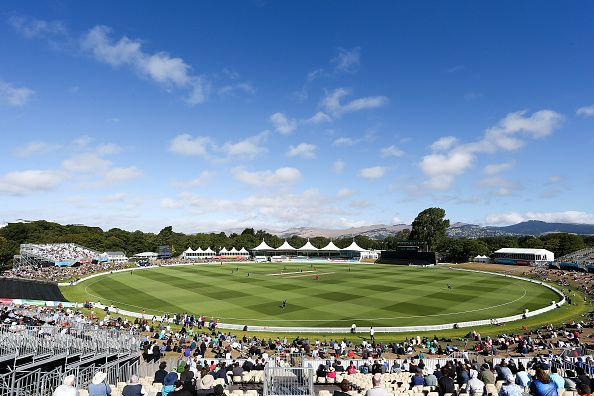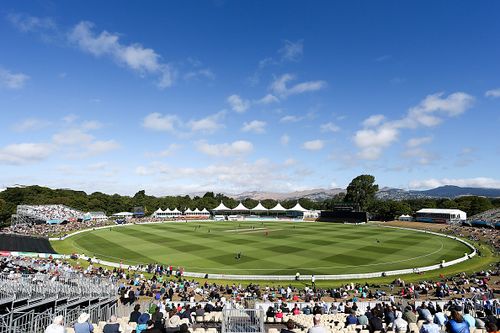
Rebirth of Christchurch, New Zealand through Cricket

Four years ago, when the Black Caps were playing the World Cup here in the Indian subcontinent, their country New Zealand was hit by a massive earthquake. The epicenter of the earthquake measuring 6.3 on the Richter scale was close to Christchurch. The beautiful city was devastated. Old and new buildings came down in fraction of seconds. Roads caved in and public transport services crumbled. The Black Caps had tears in their eyes as they sang their national anthem before a game in Nagpur three days later.
Cricket in Christchurch has always been a big deal. The AMI Stadium, Christchurch’s only international cricket venue back then was known for its small boundaries. When India toured New Zealand in the summer of 2009, both teams created a new record of the highest number of 6s in a match. Yes, thanks to Sachin Tendulkar and other batsmen. India’s 392/4 also became the highest total in New Zealand.
But, those stats have a lot to do with the fact that back then the stadium was under renovation and the boundaries had been reduced. I wonder if the AMI Stadium boundaries were bigger than that at Mumbai's Oval Maidan. The AMI Stadium which was home of all the sporting activities in Christchurch had just been rebuilt for the 2011 Rugby World Cup. Rugby is to New Zealand what Cricket is to India and Football is to Brazil.
But the earthquake that destroyed Christchurch did not spare the AMI Stadium. The organizers conducted surveys and found that the stadium had been structurally damaged. Since then, no event has happened at the AMI Stadium. All the Rugby World Cup matches of AMI Stadium were moved to other venue like Eden Park, Auckland.
So, since February 2011 the AMI Stadium has not seen any action. The grass has died; the newly built stands have been taken over by creepers and climbers. The Hadlee Stand has been brought down. And the venue has been reduced to a khandar. The AMI Stadium is still lying almost in the exact state that it was on that unfaithful day in February 2011. The city council is still discussing what to do with it. Repair or rebuild?
The rebirth of Hagley Oval
The story of the AMI stadium is similar to that of Christchurch city. A bustling city had been reduced to nothing. But sports have always played a role in making people and nations stand up. Cricket has given the people joy and hope. It has brought communities together and made them stronger. The Hagley Park is a public place in Christchurch which was set aside hundreds of years ago by the people who first came to the city.
Since 1867, The Hagley Oval has been a low-key yet, picturesque cricket venue. The Hagley Oval is small. It can be seen as a cleaner and more stunning version of Mumbai's Shivaji Park or Azad Maidan. A decent sized ground with one pavilion. Where people could stand at the sidelines and watch cricket under the blistering sun. The ICC and the city council cooperated and made the venue World Cup ready in less than two years. It took a lot to convince the people of Christchurch that the land had not been encroached upon and the venue will be open to people as usual after the World Cup ends.
I was of the opinion that the Cricket World Cup being the flagship event of the sport should start at a modern venue like the Eden Park. That would help the world take note of the rise of Cricket. However, when New Zealand plays Sri Lanka on February 14, Christchurch will be in the limelight. That one moment will demonstrate the strength of the people of Christchurch. It’s a glorious rebirth for Hagley Oval. It’s a glorious rebirth for Christchurch.